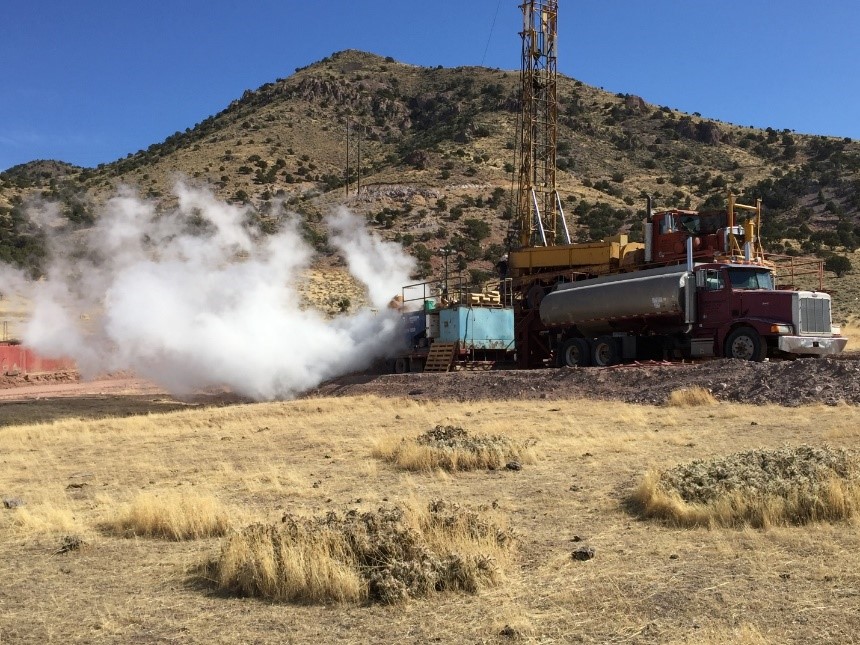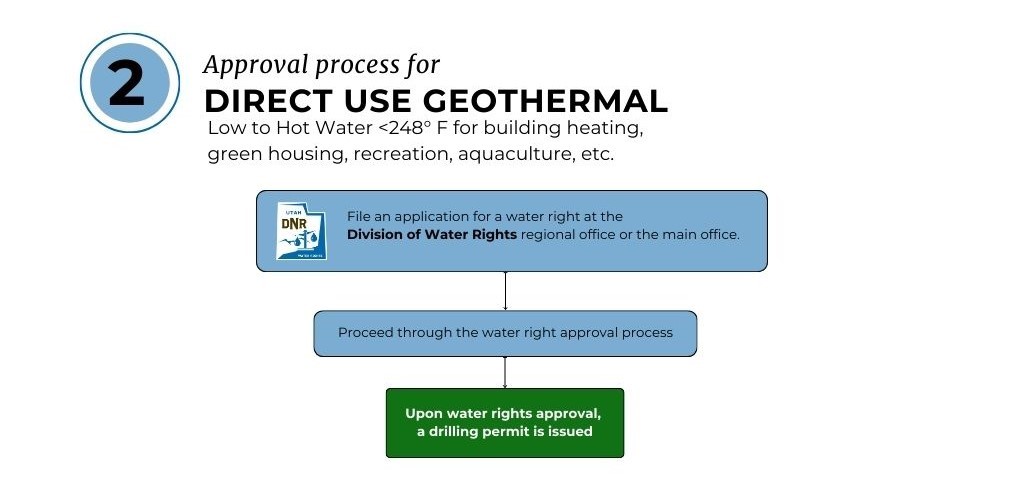Direct Use

About:

Direct use applications generally incorporate moderate (<120°C or <248°F) to low temperature groundwater for purposes such as direct building heating, green housing, recreation (e.g., spas, swimming, and diving), aquaculture, crop drying, industrial processing, and warm water fisheries. Use of moderate to low temperature groundwater requires a water right, and the process for obtaining a water right is the same as any groundwater water right. Information regarding the water right process can be found from our Division Home page, from our water rights brochures, and by contacting water rights staff.
The major difference from conventional water well development is that direct use projects also need to dispose of the water once it has been used for its design application. Disposal is accomplished through direct injection of the geothermal water via an injection well, or through disposal to either the ground or surface waters if injection is not an option. The Utah Division of Water Quality (DWQ) oversees fluid disposal plans and permits for direct use geothermal applications.
- First, gain access to lands either through lease or direct ownership.
- Then, contact local and/or county agencies to ensure compliance with local land use laws including building permits and zoning restrictions.
- Next, secure water right. (DWR)
- Following that, obtain well construction permit/develop production well. (DWR)
- Finally, determine fluid disposal plan and obtain permits for either underground injection or surface disposal. (DWQ)
Any direct use well drilled must have a valid water right and be constructed by a currently licensed Utah Water Well Driller as per Utah Code Section 73-3-25. The State Engineer, through the Division of Water Rights, is responsible for licensing requirements and well construction criteria found in the Administrative Rules for Wells (R655-4 UAC).
Prior to drilling, a licensed well driller must make certain that a valid authorization or approval to drill exists before beginning drilling or work on a well. A valid authorization to drill can include:
- an approved application to appropriate,
- a provisional well approval letter which grants limited authority to drill to determine groundwater characteristics,
- other specific applications approved by the State Engineer.
The regulations governing the disposal of low temperature direct use geothermal fluids will depend on the type of application. Non contact geothermal projects, where the geothermal fluids are kept in a closed system and do not come in contact with outside contaminants, will typically have an easier compliance path then projects where contact with potential contaminants is made. When contact is made and water quality is potentially degraded, regulatory requirements may become more stringent to ensure that water quality is maintained.
The water right associated with a direct use project must clearly define the disposition of discharged fluids inasmuch as the diversion and depletion values may be impacted depending upon whether the system is consumptive use or non-consumptive use.
There are basically three disposal options available to a developer of a direct use geothermal project:
- underground injection (UIC permit required);
- disposal to surface waters (discharge permit required);
- and/or, disposal to the ground or land application.
Underground injection control wells are regulated under Rule R317-7, the Underground Injection Control (UIC) Program. The Utah Division of Water Quality is the lead agency and administers the UIC program. The UIC regulations are designed to ensure contaminants do not escape from wells into aquifers.